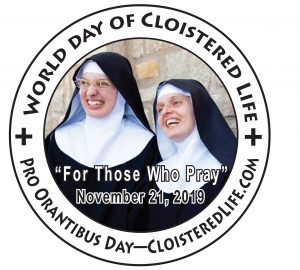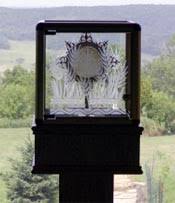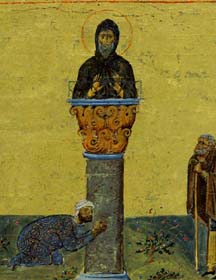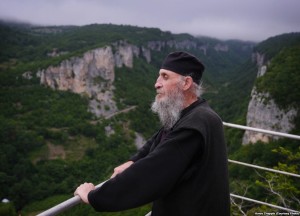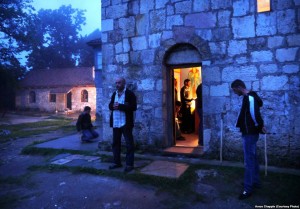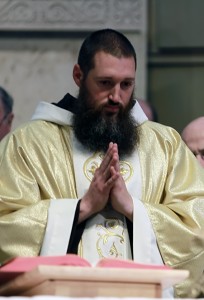By Sr. Courney Haase, CoC
 The Companions of Clare is an emerging religious community located in Skowhegan, Maine. As the name implies we follow a modified Franciscan rule of Clare of Assisi. The Companions are revitalizing the beguine tradition in America following the format and structure.
The Companions of Clare is an emerging religious community located in Skowhegan, Maine. As the name implies we follow a modified Franciscan rule of Clare of Assisi. The Companions are revitalizing the beguine tradition in America following the format and structure.
Let us begin with Beguines?
Without burdening you with too much historical data, I invite you to do a Google search of the beguines in history. They were strong, independent women who loved God but did not wish to enter monasteries, the only available option. They were autonomous in concept and lifestyle. Many women saints and founders started as beguines. Numbers among beguines were St. Colette of Corbie, St. Angela Merici, and many others. They were women who wanted to spend their lives with community support and in prayer. The beguine tradition is currently being studied and there is a revival of their spirit, especially in the lowlands of Europe where they originated. There are some YouTube videos at the end of the Companions website as well as a small list of books that are interesting and pertinent. I hope this cursory overview ignites your curiosity.
Religious life as we know it is changing as is the Church. Beguines were on the cutting edge of a different style of religious women. The Companions of Clare are following suit. The new is meeting the old! Both the Church and a new version of the beguines are breathing the Spirit of new life. All of us are looking ahead and occasionally we necessarily review the old. There is value in both and in new birth. Sometimes it is painful but always rewarding.
More about the Companions
And so enters the Companions of Clare. The mission of the community is adoration and thanksgiving and is geared to mature women who wish to spend their days with like-minded people. Many times maturity develops an insight or “second sight” to the soul. The community feeds on the liturgy and is dedicated to an intense contemplative prayer lifestyle. It is meant to fill a need for women who wish to reenter religious, life if they have previously left (but is not restricted to that end), or for women who wish to spend the remainder of life in prayer.
Social work is not our goal. The five priorities of the Franciscan order consist of prayer, formation, evangelization, community and ministry. The Companions pray without ceasing, are formed in Franciscan ideals and virtues, evangelize by our dress, work to live and grow in a community of spiritual women and encourage silence in our noisy world. The beguineage is considered a sacred space to all who visit. Living here demands mindfulness. It is not always a piece of cake as you can imagine. But the rewards are by far sweeter.
The physical work of the Companions is basically maintaining the household and doing handiwork. There are 3 alpacas which supply the community with fleece for spinning and weaving. The end result of the work is not judged for selling but rather is used as gifts for benefactors and to enhance the contemplative spirit of the beguinage. The housekeeping, garden and outdoor work as well as handiwork help to free the heart for prayer. If your talent is writing, you may be asked to supply literature for publication. During the formative years some personal funds are reserved, after room and board is paid, as backup for formation members. All things are held in common after profession of vows.
The Prayer Life of the Community
 The Divine Office is prayed in full and in common. The rosary and any other private prayer are at the discretion of the sisters. Time is set aside for Lectio Divina and, of course, classes for formation are scheduled. Mass is attended and a Holy Hour for adoration is included in the day. The Companions have been blessed with the sponsorship of the Franciscan Friars. Those who have asked us to remember their intentions sit with the communion of saints and sisters in the chapel as we pray.
The Divine Office is prayed in full and in common. The rosary and any other private prayer are at the discretion of the sisters. Time is set aside for Lectio Divina and, of course, classes for formation are scheduled. Mass is attended and a Holy Hour for adoration is included in the day. The Companions have been blessed with the sponsorship of the Franciscan Friars. Those who have asked us to remember their intentions sit with the communion of saints and sisters in the chapel as we pray.
In our prayer we focus on seeking and adoring the Face of God. Our seeking and eventual spiritual vision is worth any amount of discipline. Speaking of which, the Companions work hard to maintain a peaceful environment during the trouble times the world is facing. This is the main source of our discipline. Living as a group in peace and harmony is an intense discipline. Artificial discipline is not a goal.
The Beguinage (Convent)
 The beguinage has room for 7 sisters. It sits on 7 acres and has a hermitage in the woods for visitors. Anyone who is interested in coming, even for a “Come and See,”* is required to submit to some screening and vetting. This is for safety.
The beguinage has room for 7 sisters. It sits on 7 acres and has a hermitage in the woods for visitors. Anyone who is interested in coming, even for a “Come and See,”* is required to submit to some screening and vetting. This is for safety.
As Pierre Teilhard de Chardin so beautifully reminds us: “Above all, trust in the slow work of God. We are quite naturally impatient in everything to reach the end without delay. We should like to skip the intermediate stages. We are impatient of being on the way to something unknown, something new. And yet it is the law of all progress that it is made by passing through some stages of instability and that it may take a very long time. And so I think it is with you, your ideas mature gradually- let them grow, let them shape themselves without undo haste”…
*During this period of pandemic requests for “Come and See” visits are on hold. This is regrettable but allows you more time for discernment, personal prayer and a sense of personal solitude. Definitely, this time for some is a blessing in disguise. Information is still supplied and telephone inquiries are still accepted.
Further information and pictures of the Convent of Peace and Good can be viewed on the website www.companionsofclare.org. Any other questions? Do not hesitate to call me.
Sr. Courtney Haase, CoC, Guardian
Convent of Peace and Good
627 Middle Rd.
Skowhegan, ME 04976
207-431-2664
“
